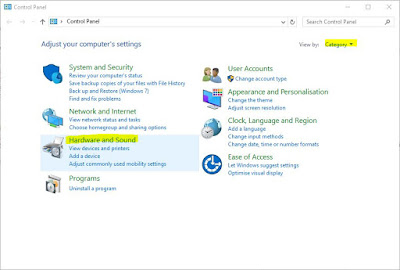10 Tips for Financial Statement Analysis
10 Tips for Financial Statement Analysis - Financial Statements are part of every business – financial statements are used for business management, financial reporting, financial control and they are also critical sources of financial information used for making smart business decisions. Business managers, investors, bankers and other company stakeholders who have interest in your business use the financial statements to better understand how your business is performing financially.
The
three most important financial statements used for reporting and financial
analysis by any company:
1. Income Statement (also known as Profit and Loss Statement or P&L
Statement)
2. Balance Sheet
3. Cash Flow Statement
These
three financial statements are financial documents or reports that summarize
the company’s financial performance and by using these three financial
statements you can develop a good insight into your business and understand the
financial performance of any other company. If you take a look at the annual
reports published by any corporation you will find these three financial
statements or reference to part of these statements such as financial indicator
and ratios as part of the annual report.
Financial Statement Analysis for Small Business
Income Statement
(also known as Profit and Loss Statement or P&L Statement)
The Income Statement (P&L) generally
includes the following line items:
+) Revenue or Sales
+) Revenue Related Expenses
+) Net Revenue (Revenue – Revenue Related Expenses)
+) COGS (Cost of Goods Sold) – this is direct cost of sales like raw materials
+) Gross Profit
+) Operating Expenses
+) Operating Profit
+) Net Profit
+) Balance Sheet
Baca Juga : Tips dan Trik Cara Memilih Kartu Kredit Di Indonesia
The Balance Sheet of
most companies will include the following categories and line items:
+) Assets
+) Current Assets (Cash, Accounts Receivable, Inventory)
+) Long-Term Assets (Equipment, Building, Land, Property)
+) Liabilities (Debt)
+) Current Liabilities (Accounts Payable)
+) Long-Term Liabilities
+) Owner’s Equity (Total Assets – Total Liabilities)
+) Cash Flow Statement
+) Cash Flow from Operating Activities (Change in Accounts Receivable, Change in Inventory, Change in Debt, Change in Depreciation)
+) Cash Flow from Investing Activities (Change in Capital Expenditures, Change in Investments)
+) Cash Flow from Financing Activities (Change in Financing such as dividends paid and purchase of stock)
10 Important Tips for Financial Statement Analysis
When
you want to perform a quick financial statement analysis pay attention to the
following:
1. Look at the P&L Statement or Income Statement to see the current revenue
and the trend in revenue or sales for the last periods. Is the revenue growing
or is it decreasing.
2.
On the P&L Statement look at the Gross Profit Margin and calculate the %
Gross Margin.
3.
From the P&L look at the Operating Expenses and see the percent of revenue
– this will give you an idea of how high the fixed costs are in the business.
4.
From the P&L look at the Net Profit Margin as a percent of sales – this
shows you how profitable the business is.
5.
On the Balance Sheet look at the ratio between Assets and Debt (Liabilities)
and see the overall structure of the company.
6.
The Balance Sheet will also tell you the Owner’s Equity which is the difference
between assets and liabilities or debt.
7.
The Cash Flow Statement will show you how much cash on hand the company has.
8.
The Cash Flow Statement will also show you and help you understand the sources
of cash – for example is the cash collected or spent on financing, investing or
business operations.
9.
Look at the trends on all three financial statements and see the trends and pay
attention to those financial trends, indicators or ratios that have substantial
change over time – this reveals information about any major financial changes
in the company.
10.
Define the most important financial ratios or financial metrics for your
business and calculate the ratios – make sure you have a simple template where
you can track and monitor these financial ratios in order to identify any
positive and negative changes in your business over time. This will help you
understand the trend in your business and improve by taking actions on time –
before it’s too late.





